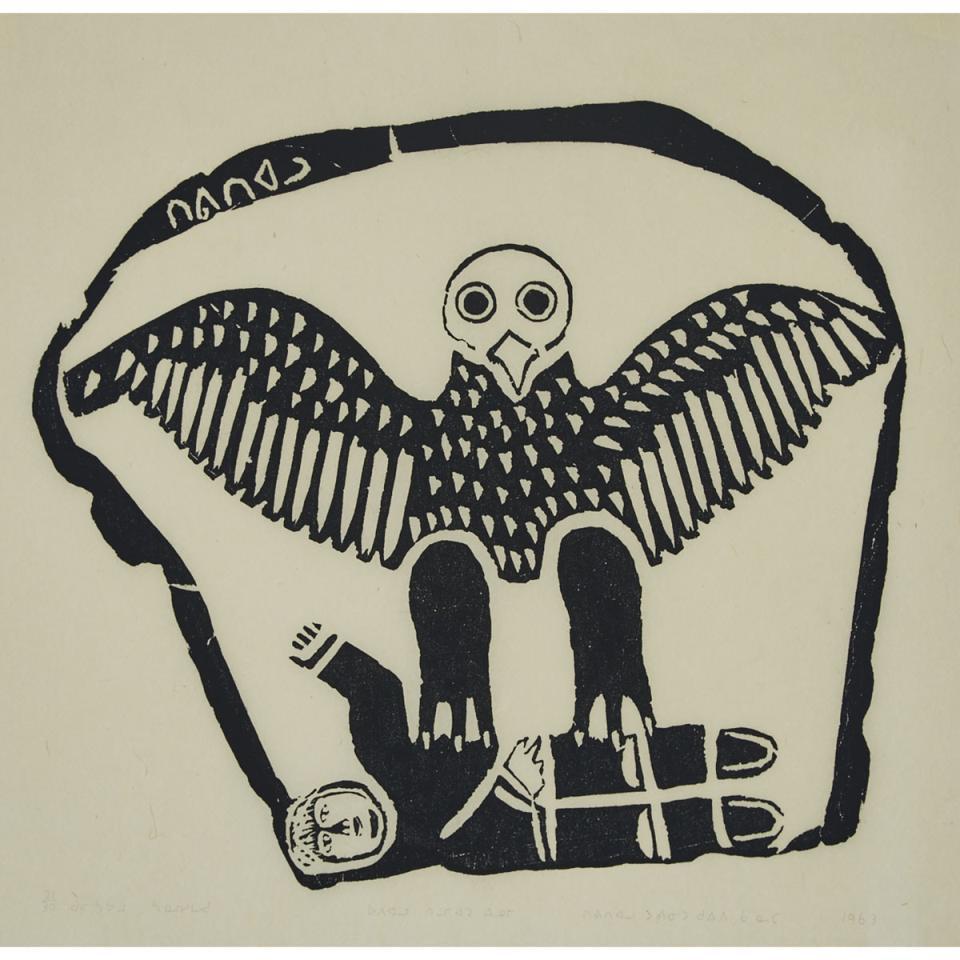Povungnituk Print Making
Perhaps unfairly tainted by the peculiar name of the settlement – Povungnituk translates as 'Place where there is a smell of rotten meat' – Povungnituk print making has long played second fiddle to the works from Cape Dorset and Baker Lake. Povungnituk, also known as POV, is located along the eastern shores of Hudson Bay on the Ungava Peninsula in Nunavik (Arctic Quebec). Printmaking started in 1961 as a project of the newly formed Povungnituk Cooperative, following the success of the Cape Dorset print shop. Annual print collections were produced in Povungnituk from 1962 through to 1989 when the Co-operative closed the print shop after the death of several prominent graphic artists.

The Povungnituk Annual Print Collections normally contained 25 to 35 different images limited to 50 prints of any one image. The trademarked Povungnituk chop-mark is the seal of the Povungnituk Sculptors’ Society, which later became the Povungnituk Co-operative and a founding member organization of La Federation des Cooperatives du Nouveau Quebec. The seal continues to be used today by artists such as Lucassie Qumaluk and Jackusie Itukalla because of its singularly appropriate message The People of Povungnituk independent through a common effort.
Povungnituk notable POV artists, include Davidialuk Alasua Amittu, Charlie Sivuarapik and Joe Talirunili, who were all sculptors as well as print makers. Unlike the print artists of Cape Dorset who use print assistants to transfer the image onto the print block, POV artists carved the design onto the print block themselves. The powerful distinctive style of POV prints comes through the rough texture and uneven harsh edges of the stone block itself.
Another fundamental difference in the art of the two settlements was the lack of influence of southern craft officers on POV artists, and the absence of southern market pressures. This allowed the artists to communicate what was important to them – to narrate both the reality of harsh Arctic life and the mystery of vivid legends and myths. POV prints are a rich testament to Inuit folklore traditions. George Swinton, distinguished Inuit art authority, described POV prints as displaying an unself-consciousness and honesty.

Underappreciated, undervalued? – something to be considered. However, the closing remarks in the final Print Catalogue of 1989 makes a wise observation that “Print sales are important of course, but the need (of the graphic artists and printmakers of Povungnituk) to describe, in pictures, their part of the world to the rest of it is just as powerful.”


